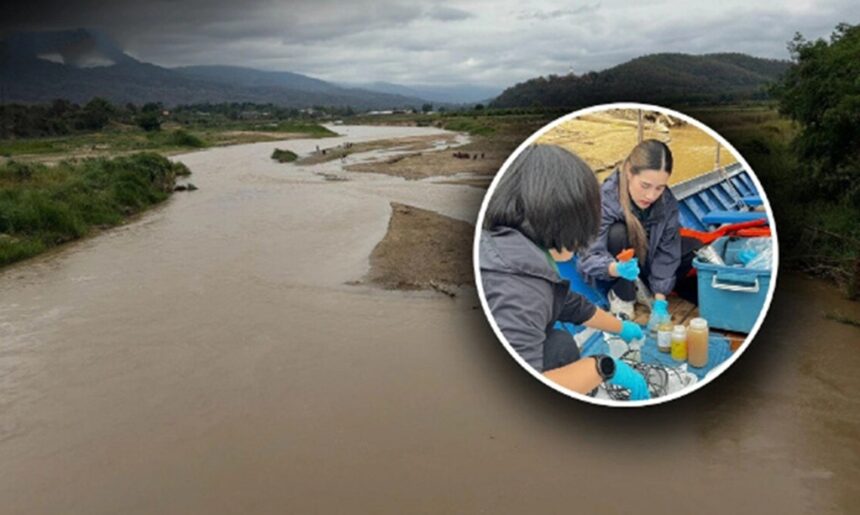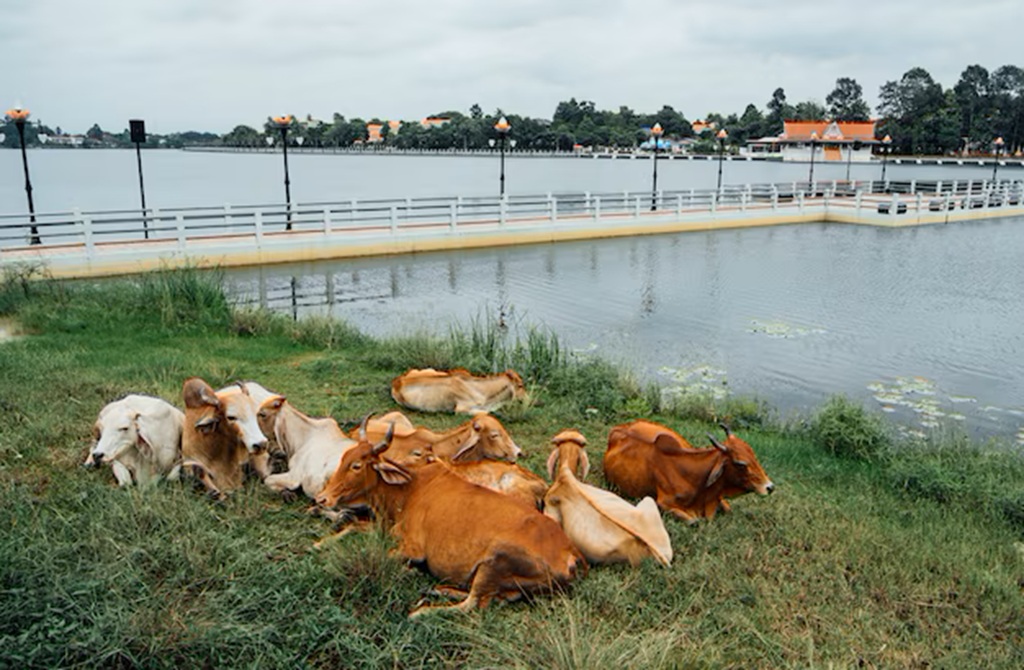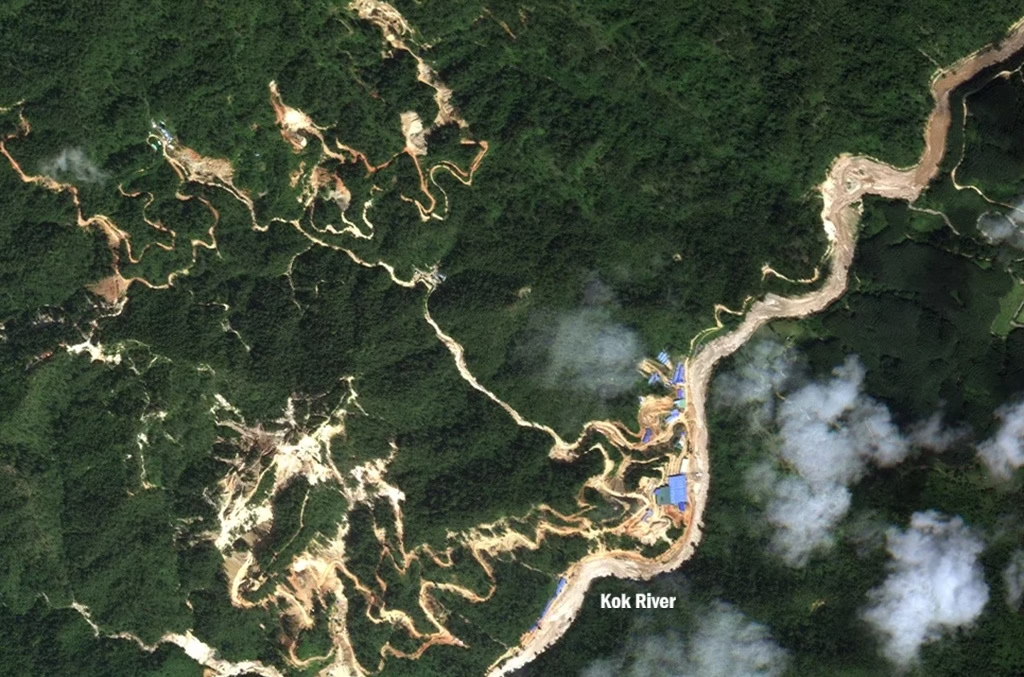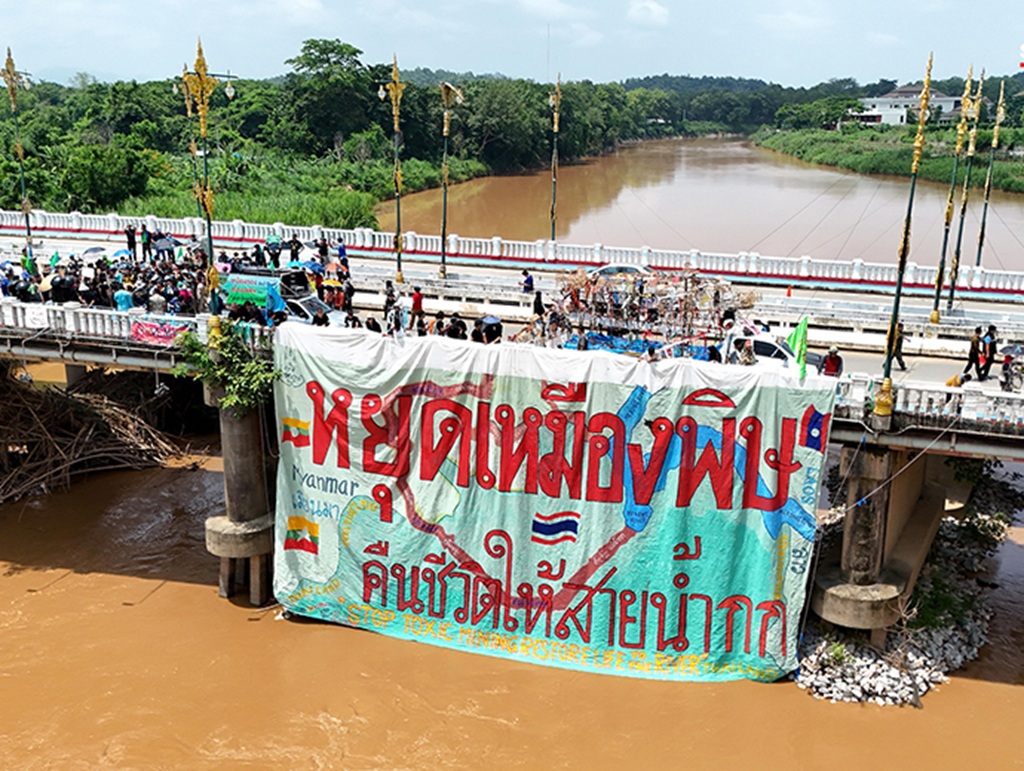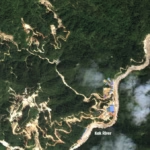CHIANG RAI — The House Committee on Water Resource Management reports that September sampling shows that surface water in the Kok River now meets standards, yet riverbed sediments at nine points still contain arsenic above the level set to protect benthic organisms.
The Sai River remains in poor condition in both water and sediments. In the Ruak and Mekong, surface water passes, but contaminated sediments persist. Researchers warn that polluted sediments act like a time bomb, since toxins can return to the water column during floods, strong currents, or dredging.
Agriculture, fisheries, and tourism face combined losses of about 3,786 million baht per year. Public health authorities have activated four monitoring measures, and the parliamentary committee has called for short, medium, and long-term plans.
The Shan Human Rights Foundation reports continued expansion of rare earth and gold mining near the Kok in Shan State, ahead of the MRC meeting in November in Chiang Rai.
“The Kok River Water Looks Clear, but the Riverbed is Still Unwell.”
At the 31 October session of the House Committee on Water Resource Management, central, regional, and provincial agencies briefed on the latest conditions in the Kok, Sai, and Ruak rivers and their tributaries.
The update follows months of abnormal turbidity and repeated findings of heavy metals above reference levels in the border districts of Chiang Rai and Chiang Mai, affecting household use and riverside farming.
Findings from the Office of Natural Resources and Environmental Policy and Planning Region 1 (Chiang Mai), based on samples collected from 22 to 26 September 2025, show:
- Kok River: surface water complied with standards at all stations, but sediments contained arsenic above the benthic protection threshold at nine sites.
- Sai River: still alarming, arsenic in surface water exceeded standards at all stations, around 0.015 to 0.017 mg/L, and sediments were above safe levels for bottom-dwelling species.
- Ruak and Mekong: surface water met standards, but sediments in all Ruak sites and three Mekong sites were above safe limits; the Mekong ranged from 32 to 60 mg/kg.
A key pattern from multiple rounds of monitoring is clear. Surface water can rebound with rainfall, dilution, and flow, but contaminated sediments are a structural problem that sits in the riverbed.
Pollutants can resuspend into the water during strong flows or disturbance, such as dredging or flood events. Risks to benthic fauna, food chains, and bioaccumulation remain active.
Border Economy Under Strain, Nearly 3.8 Billion Baht at Risk Anually
Estimates compiled by Rocket Media Lab and official agricultural data highlight tangible losses:
- Kok basin: about 340,358.73 rai of farmland at risk, potential annual loss of roughly 3,239,061,808.4 baht, around 13% of Chiang Rai’s agricultural GDP.
- Sai and Ruak basins: about 63,023.89 rai at risk, potential annual loss near 547,100,952.5 baht, about 2.19% of the provincial agricultural GDP.
Combined losses across the three basins may reach 3,786,162,760.9 baht per year. Rice is the most exposed crop, representing 66.54% of projected losses in the Sai and Ruak, because most paddy fields line the rivers and draw water directly for off-season planting.
The effect on capture fisheries and aquaculture also matters. In 2024, freshwater catch in Chiang Rai was about 1,417 tonnes, worth 92.76 million baht, and aquaculture covered 689.17 rai across 284 farms in five subdistricts along the Sai and Ruak.
Riverside tourism and border markets, such as Mae Sai and Thaton, also suffer from reduced environmental confidence, which cuts spending in peak holiday periods when water bodies are a core part of the scenery and public amenity.
Public health Actions, Four-track Surveillance for Water and People
The Chiang Rai Provincial Public Health Office outlined four measures:
- Environmental health: monthly testing of surface water, tap water, vegetables, and fish for arsenic and lead.
- Population health: community symptom surveillance, proactive screening, and random urine tests for at-risk groups.
- Risk communication: alerts to avoid direct use of natural surface water, with guidance on symptom monitoring.
- Multi-agency work: coordination with water, agriculture, local administration, and fisheries offices.
From April to October 2025, the Medical Sciences Centre 1/1 Chiang Rai reported no arsenic exceedance in drinking and domestic water, fish, or vegetables. Even so, residents continue to call for clear and transparent health updates. References to seven urine samples above reference levels require context, including timeframes and repeat testing, to build trust without causing panic or complacency.
Policy Table Moves, Committee Orders Three-phase Response and Tighter Reporting
The committee asked each agency to compile problem summaries, barriers, proposals, and action plans for short, medium, and long terms for cabinet consideration. Region 1 presented five core aspects: overall water quality status, surface water standards, joint monitoring, legal control measures, barriers and recommendations. The Department of Water Resources audited 45 village waterworks around the Kok. Three systems failed to meet standards, and new surface water sources are being secured. Five solar-powered pumping and distribution projects are moving ahead.
The Provincial Waterworks Authority has increased sampling frequency at its main branches in Chiang Rai, Mae Sai, Chiang Saen, and Chiang Khong. The Provincial Administrative Organization, with the public health, agriculture, and fisheries offices, continues to test community water supplies, vegetables, and fish.
Headwaters in Shan State, Rare Earth and Gold Mines Keep Growing
The Shan Human Rights Foundation reported on 28 to 30 October 2025 that recent satellite images, 14 Oct 2025, confirm the expansion of two rare earth operations and a gold mine on the Kok near Mong Yawn, Shan State, Myanmar, about 30 km from Thaton, Chiang Mai. In situ leaching is used, which injects large amounts of chemicals into hillsides, a method that can leak into waterways and is hard to control.
Comparisons between May and October 2025 show completed processing ponds with roofs on the west bank, new buildings on the east bank, and recurring blue liquid in ponds. This suggests a major increase in processing activity. Thai Kok basin communities continue to warn about arsenic, cadmium, and lead contamination. Their message, “Rivers for life, not rivers for death”, underlines ethical and human rights concerns for downstream communities.
November MRC Meeting, a Chance to Lift Cross-Border Environmental Diplomacy
The upcoming MRC meeting in Chiang Rai is seen as a regional policy moment. Thailand is urged to:
- Propose near-real-time cross-border water quality alerts and data sharing.
- Advance standards for mining in Mekong tributaries and chemical traceability.
- Form a joint Thailand–Myanmar–China working group that integrates satellite imagery, field monitoring, upstream investigation, and geographic risk mitigation, such as containment areas and sediment ponds, with buffer zones for vulnerable sites.
A visit by members of Germany’s Green Party around the same time points to international cooperation, with a focus on responsible mining practices and clean supply chains in global markets.
From Reactive Response to Prevention, a Package for the Short and Long Term
Based on current data and conditions, a five-part package would ease risks now and reduce future harm:
- Public dashboard: weekly station-by-station results for surface water, sediments, and heavy metals, with metadata on methods, laboratories, and confidence.
- Sediment management plan: feasibility of containment, capping, and selective dredging, backed by EIA and community health safeguards, so fixes do not stir up more pollution.
- Community health protocols: expand biomonitoring of at-risk groups, repeat random urine or blood tests, proactive screening, and single-source risk communication, with actual values and confidence ranges rather than vague phrases like “below the standard”.
- Environmental diplomacy: Use the MRC platform and bilateral channels to tighten controls on mining chemicals and supply chain traceability with buyers of rare earths and gold.
- Targeted trade measures: consider limits on imports linked to basin damage, aligned with the proposed CTM approach, with incentives for suppliers that meet environmental standards.
Local Voices and on-the-Ground Management
Over recent months, Chiang Rai agencies increased surface water sampling to twice a month at multiple sites. They are also documenting damage and monitoring costs to set next year’s budgets. This shows a willingness to act locally, not just rely on the centre.
Provincial water, environment, agriculture, and fisheries teams reported constraints such as budgets, staffing, and access to upstream areas across the border. A national coordination mechanism is needed to keep work continuous.
Civil groups and river networks ask for simple, steady information that addresses immediate concerns. They want clear maps of zones where direct water use should be avoided, areas where fish consumption needs caution, and guidance for vulnerable groups such as children, pregnant women, and older people. Households need reliable data to make decisions.
A Thin Line Between Clear Skies and an Unwell Riverbed
As of late October 2025, surface water shows partial recovery, especially in the Kok, where many points meet standards. The riverbed remains sick, though, with heavy metals in sediments above protective levels at many stations in the Kok, Sai, Ruak, and Mekong.
The ecological risks also feed into local economies, pressing on rice cultivation, fisheries, and tourism in border districts. All this unfolds while upstream mining in Shan State keeps expanding.
Policy cannot stop at testing and advisories. It must scale up into a single package of public data systems, sediment control, community health protection, cross-border diplomacy, and smart trade tools. The MRC meeting in Chiang Rai can anchor a shared commitment to safeguard the basin.
“Rivers for life, not rivers for death.” The words from Kok basin communities remind everyone that success is not only a lab number. It is the safety and dignity of people who live with these rivers every day.




